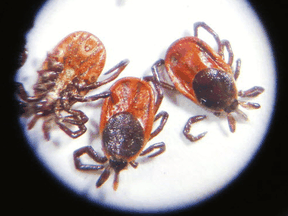Article content
Of all the central banks which until recently dismissed inflation as transitory, one still stands: the Bank of Japan. But it’s increasingly being challenged by hedge funds, which are betting it can’t hold the line on super-loose policy forever.
Ears are peeled, too, for any details on the ECB’s plan to prevent rate hikes from hurting weaker euro bloc economies.
And in emerging markets, there’s no let up in rate-hike fever with Indonesia and Mexico among those expected to raise rates, while one major outlier dismisses any need for tightening: Turkey.
Advertisement 2
Article content
Here’s your look at the week ahead in markets from Lewis Krauskopf in New York, Tom Westbrook in Tokyo and Dhara Ranasinghe, Karin Strohecker and Sujata Rao in London.
1/ WHEN DOVES BUY
The Bank of Japan has defied the direction of monetary policy globally, sticking with ultra-easy settings and a vow to buy 10-year bonds every day to anchor borrowing costs.
The result is a sliding yen, a yield curve that’s being bent out of shape and a bond market almost buckling in the tussle between hedge funds and policymakers.
Meanwhile, Japanese living costs are rising and as July mid-term elections approach, the BOJ may face political pressure to tone down its efforts to raise inflation.
That could intensify if inflation data due on Friday shows above-target price growth for a second month in a row.
Advertisement 3
Article content
2/ PAIN THRESHOLD, HIT
The ECB is promising additional support for the euro bloc’s indebted southern rim, looking to calm the angst caused by its policy tightening plans.
So far, all we know is that the new scheme may attach some loose conditions. Investors, keen to find out what shape and form the tool might take, will be on the prowl for clues.
Bond markets reacted with relief to the ECB’s plan. But investors are an impatient bunch and could soon test its resolve to contain bond market strains.
Having had to reverse course just six days after failing to reassure markets it would keep borrowing costs in check, ECB officials know the clock is ticking.
3/ PMI TIME
Advance readings of June purchasing managers’ indexes (PMIs), due on Thursday, will make for interesting reading, showing how businesses coped with this month’s surge in the cost of capital and a souring in consumer sentiment.
Advertisement 4
Article content
So far this year, European and U.S. PMIs have held above the 50 mark, while Chinese zero-COVID policies dragged Asia into contraction.
Now though, European and U.S. PMIs are going the other way, as higher borrowing costs bite. Economists polled by Reuters expect June PMIs to show further modest weakening.
PMI watchers might choose to train their sight on Asia, where readings nudged higher in May and may do so again this month, as swathes of China emerged from lockdowns and authorities stepped up investment.
And Chinese PMIs’ return to expansionary territory would be a bonus for the global economy.
4/ POINTING TO POWELL
Fresh off the Federal Reserve’s biggest rate hike in nearly three decades, Fed Chair Jerome Powell will be in the spotlight on Wednesday when he testifies before the Senate Banking Committee.
Advertisement 5
Article content
Blistering inflation forced the Fed to raise interest rates by 75 basis points on June 15 and flag a faster rate-rise path. But it also projected a slowing economy and rising unemployment, highlighting a tricky balancing act ahead.
The testimony will allow Powell to hammer home his determination to quell inflation. But with the S&P 500 down 20% from January record highs and other asset prices also falling, he may be quizzed for detail on how the Fed can tame inflation without causing too many ructions in the economy and markets.
5/ TWO DECADES OF LIRA WOES
Policymakers at Turkey’s central bank will meet on Thursday to debate where interest rates will go. The answer, though, is already known — nowhere. That means pressure on the lira will increase further.
Advertisement 6
Article content
Despite shrinking FX reserves and inflation above 70%, interest rates are stuck at 14%, due to President Tayyip Erdogan’s push for lower rates.
Instead, a number of measures – widely seen as failing to address the core problem of soaring inflation – have been introduced to shield locals from the fallout of a currency that has lost some 90% of its value in the past decade.
But in other emerging markets, central banks are not dithering. On Wednesday, Czech rates could rise 100 bps ; Indonesia may kick off its tightening cycle on Thursday; later that day, Mexico could raise rates by 75 bps while Egypt may continue hiking after last month’s 200 bps move .
(Compiled by Sujata Rao; additional reporting by Hari Kishan in Bangalore; editing by Kim Coghill)
Advertisement
Take Five: The last surviving dove - Financial Post
Read More








